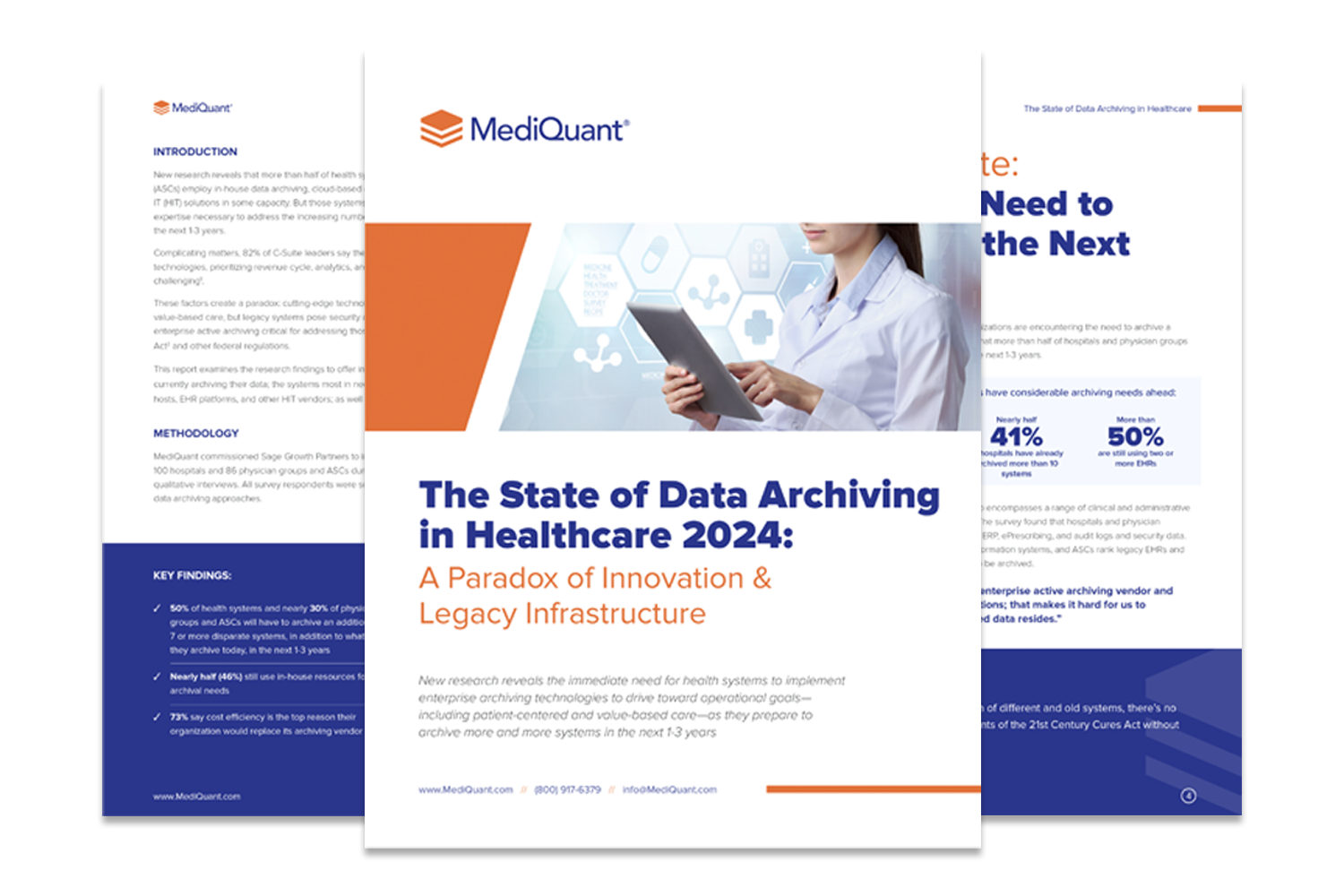By: Shawn Fergason, Senior Vice President of Information Technology and Technology Services, MediQuant
Secure healthcare data archiving is essential to the protection of confidential patient information and is a critical component in your cybersecurity program. In addition to other measures, data archiving can shore up vulnerabilities by decommissioning applications and software that are not being supported, monitored, and patched regularly.
According to MarketsandMarkets, the global cybersecurity market is estimated to grow from 173.5 billion in 2022 to 266.2 billion by 2027. Cybersecurity enhancements are driven by increased target-based cyber-attacks to draw operational disruptions.
To protect your organization from a potentially catastrophic data breach, it’s essential to understand how they happen.
Common Data Security Threats and Vulnerabilities in the Healthcare Sector
Data silos are a reality among outdated legacy applications. Hospitals and clinical systems are running hundreds, sometimes thousands, of applications simultaneously that could be vulnerable to attacks. Inadequate access controls and weak authentication mechanisms also create exploitable security vulnerabilities and opportunities for accidental data leaks.
The severity of healthcare data breaches can’t be overstated. The potential consequences include identity theft, financial fraud, and reputational damage to healthcare organizations.
Three Strategies for Securing Data Archives
Here are three effective tactics that healthcare organizations can use to secure their data archives and protect themselves and their patients from a breach:
1. Train employees.
Educating employees on data security practices is a simple and effective method for preventing and limiting accidental data breaches. Typically, employees are the weakest link in the cybersecurity chain, often responsible for sharing passwords, inadvertently downloading malware, opening phishing emails, and other cybersecurity gaffes. Annual cybersecurity employee training is a good step towards practicing solid cybersecurity hygiene. Another tactic is implementing routine cybersecurity reminders and training tools to provide continuous learning opportunities for employees.
2. Commit to following cybersecurity best practices.
Cybersecurity frameworks, like HITRUST CSF, were designed to address risks related to data privacy and data protection. Specifically, HITRUST oversees domains such as information protection programs, endpoint protection, portable media, mobile devices, wireless configuration management, and vulnerability management. It also accounts for risk management, physical and environmental security, data protection, and privacy. By adhering to a holistic cybersecurity framework, you ensure your organization is following best practices while significantly reducing your organization’s cybersecurity risk.
3. Perform vendor risk assessments.
Data leaks are very common in the healthcare sector. It’s essential to utilize a cybersecurity framework that considers risks brought to your organization by external parties. For example, suppose your hospital wants to use a new SaaS application that stores sensitive data. How can you be sure they have a mature Information Protection Program? Is the application developed according to secure software development practices? Is the data protected in motion and at rest? Are vulnerabilities continuously managed? When you evaluate supply chain risks you can help proactively manage your organizational risks to an acceptable level.
Robust cybersecurity measures such as strong access controls, multi-factor authentication, regular software updates, third-party risk assessments, and employee training limit the likelihood of costly data breaches.
MediQuant offers an industry-leading active data archiving platform and an unparalleled data migration and extraction experience. Our services include secure data archiving and countermeasures for common data security threats. We will help you get the most value from your data and technology investments.
Shawn Fergason is Senior Vice President of Information Technology and Technology Services. Shawn oversees teams responsible for product development, archiving IT maintenance and data security, including the development of strategic solutions and their effective execution whether systems are hosted by a facility or a provider. He counsels clients on all aspects of data archiving to help them meet immediate and likely needs in an era of perpetual healthcare M&A.


